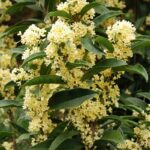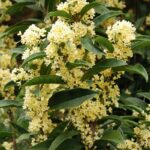The tree being referred to here is the cassia tree, also known as cinnamon flower. In the past, people liked to plant cassia trees in front of their houses and considered them precious ornamental plants. Cassia is inherently a medicinal plant. Its flowers are very fragrant and sweet-smelling, with multiple uses. Traditionally, cassia was dried and used for making wine, cakes, and tea, making it a valuable commodity that only the wealthy could afford.
Planting a cassia tree invites fortune and prosperity
Cassia trees have a distinctive woody trunk, slender branches, thick dark green leaves, and a bark that often features white spots. Its flowers are a creamy yellow, with only four thick petals, and they cluster together in bunches.
The cassia tree emits a noble fragrance. In traditional Chinese medicine, cassia is considered a precious herb that helps relax the mind.
As an ornamental plant, the cassia tree infuses your home with a pure, clean fragrance, purifying the air and creating a refreshing atmosphere.
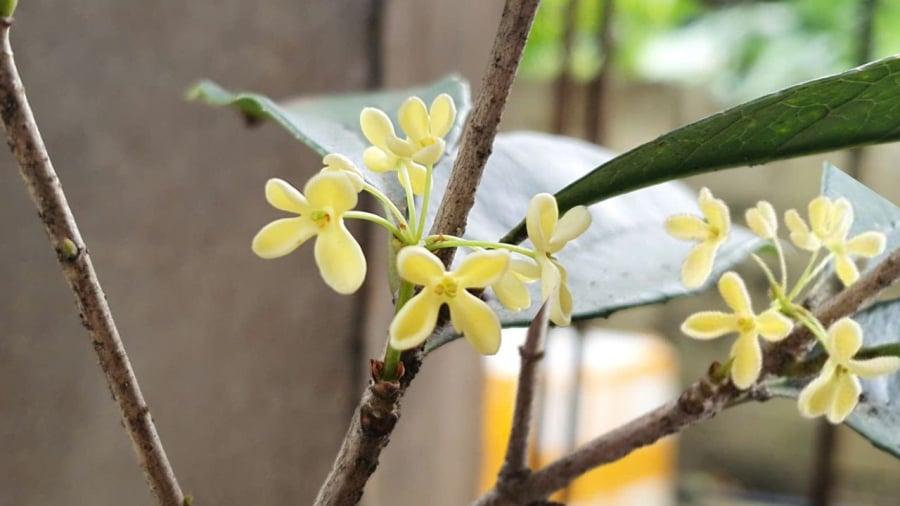
The Many Values of Cassia Flowers
In feng shui, planting a cassia tree in front of your house is believed to attract good fortune and wealth, inviting the God of Wealth to bless the household with prosperity and success. In the past, people likened the cassia tree to a noble person; planting it in front of your house was thought to bring good luck. The fragrance of the cassia tree spreads far and wide, just like the reputation of its owner. Families who plant cassia trees are believed to enjoy abundant blessings and a harmonious atmosphere, benefiting both the land and its inhabitants.
Economically, cassia trees are valuable because their flowers are one of the most expensive herbs on the market. Cassia flowers are pricier than chrysanthemums and roses. They are used for making tea, wine, and cakes and are considered a luxury item.
Hence, in the past, only wealthy families could afford to plant cassia trees, and they were seen as a symbol of both wealth and health.
Moreover, planting a cassia tree helps maintain balance among family members, preventing conflicts. This is because cassia corresponds to all five elements: its brown trunk with white spots represents earth, its fragrant yellow flowers represent metal, its green leaves represent wood, and its fiery fragrance represents fire. Water is also represented, as the cassia tree helps purify the air and create a refreshing atmosphere. Of the five elements, cassia is considered especially beneficial for those of the metal element.
Due to these feng shui characteristics, the cassia flower is highly favored by those who practice this philosophy.
Cassia Trees: A Profitable Venture
Cassia is a precious herb in traditional Chinese medicine and folk remedies, hence its high market price. The flowers are very fragrant and, according to traditional Chinese medicine, have a spicy and hot nature. They are used to make medicine that treats abdominal pain, while the roots can alleviate bone and joint pain, rheumatism, and stomach and liver ailments. Additionally, the fragrance of the cassia tree relaxes the mind and creates a refreshing atmosphere. In the past, only wealthy families could afford to use cassia. Dried cassia flowers now sell for millions per ton. Therefore, growing cassia trees not only provides a beautiful ornamental plant but also offers significant economic benefits—like having a pot of gold at home.
Cassia trees are also easy to induce to flower. When grown at home, they provide a constant supply of fresh flowers free from preservatives. Cassia trees bloom year-round, with the highest yield in autumn. Their fragrant flowers dispel evil spirits and attract good luck. The flowers grow in clusters and come in various colors, including white and light yellow. The trees produce very few fruits, which are small, green, and seeded.
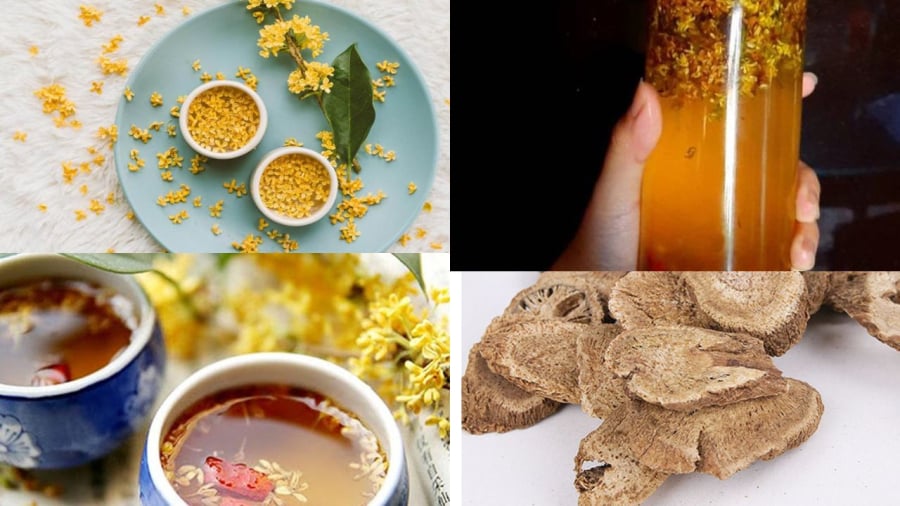
The Many Uses of Cassia Flowers
Easy to Grow
In the past, cassia trees were considered noble ornamental plants and were not commonly grown. Today, while still a precious plant, it is becoming more popular, although it has not yet reached the same level of ubiquity as roses and crepe myrtle. Cassia trees remain expensive, but they can now be grown in pots, making them more accessible to enthusiasts.
You can buy young trees to plant, or you can propagate your own by cutting branches. Choose cassia branches that are about 10-15cm long, ensuring that each cutting has 2-3 buds. Remove most of the leaves, then soak the cuttings in a solution of water and a small amount of sugar. Next, place the cuttings in small pots. Soaking the cuttings in a sugar solution helps them develop roots faster. Keep the pots in a cool, well-ventilated place, and remember to water them daily, taking care to avoid over- or under-watering. After about 20 days, you can transplant the young trees into larger pots or directly into the ground.
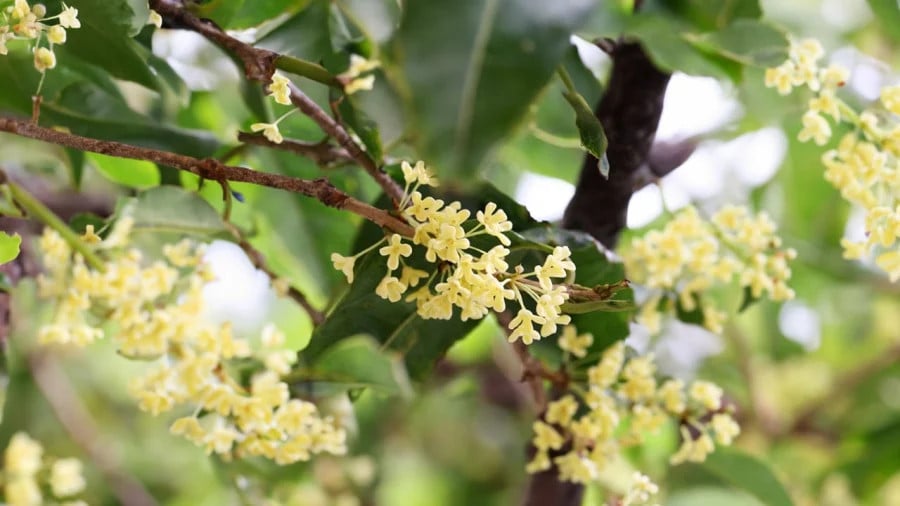
Cassia Trees Are Easy to Grow
Cassia trees are low-maintenance. Note that they thrive in sunny conditions, so choose a spot that receives ample sunlight. To promote healthy growth and frequent flowering, fertilize the trees annually and remember to prune away any dead branches and wilted leaves.
Watering: Cassia trees should be watered regularly but take care not to overwater them.
When choosing a cassia tree for ornamental purposes, you can select from two main varieties. The Vietnamese cassia has ivory-colored flowers, while the Chinese variety has brighter yellow flowers. The Vietnamese cassia has a darker trunk with more spots and cracks, giving it a more rugged appearance. Over time, its trunk may develop moss, whereas the Chinese variety has a much thicker trunk.
This information is for reference only and should be verified through personal experience.
Attracting Prosperity with Mộc Hương: The Ultimate Guide to Placement for Good Fortune
Mộc Hương, also known as the Agarwood tree, is a beloved symbol of prosperity and good fortune in many Asian cultures. Its unique fragrance and aesthetic appeal have made it a popular choice for those seeking to enhance their surroundings with a touch of natural beauty and positive energy. But where exactly should you place this auspicious tree to reap its maximum benefits?

























